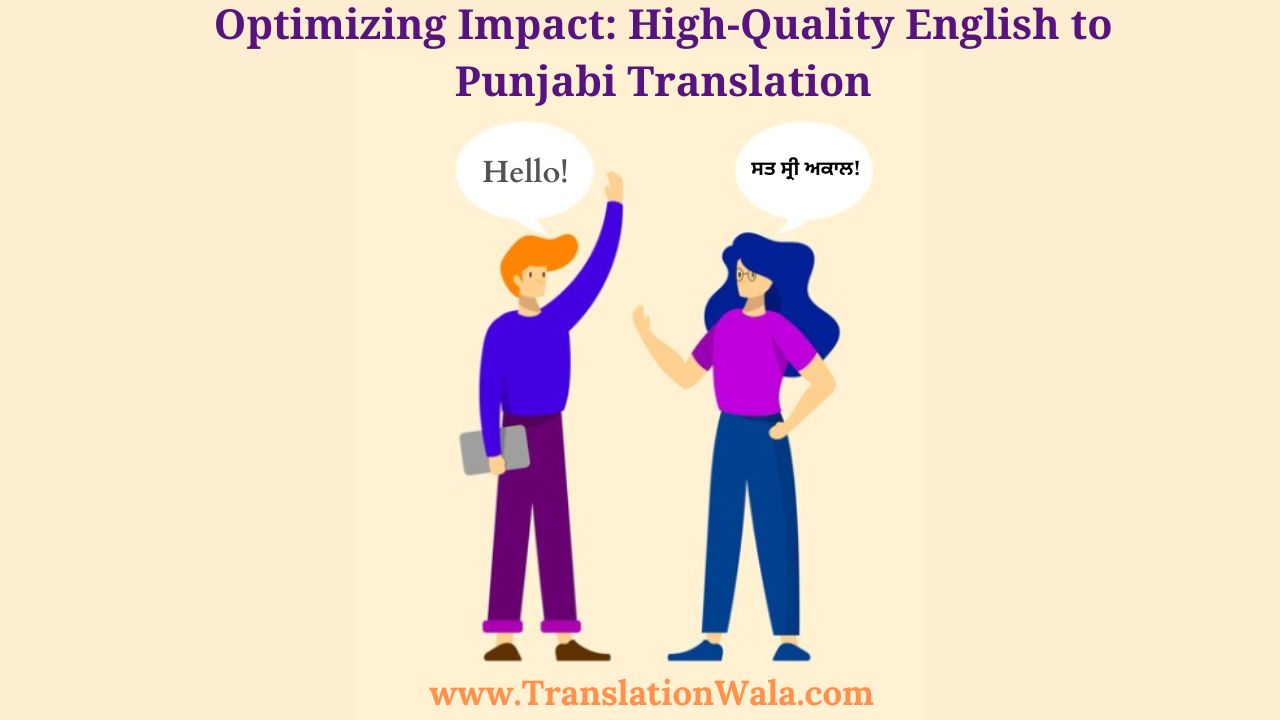Over 130 million people speak Punjabi around the world, and the language has a rich cultural history. As the number of Punjabis living outside of Punjab grows, it becomes more important to have correct and powerful English to Punjabi Translation. This piece talks about ways to make English to Punjabi versions work better so that people can understand each other’s cultures and communicate clearly.
Understanding the Nuances of Punjabi
Punjabi is a complicated language with many accents, and each one has its own words and grammar rules. The Majhi accent is where standard Punjabi comes from. It is often used in official writing. But there are regional differences in Punjab, and the Punjabi people around the world.
To choose the best range and language for the audience, a skilled translator needs to be aware of these subtleties. For example, translating a formal document for a Punjabi audience in India might be different from translating a website for a younger Punjabi audience in North America.
Cultural Considerations
Culture and language go hand in hand. It’s not enough to just change words word for word when you translate. A good translation knows the cultural background of the source text and correctly conveys the meaning in Punjabi.
Here are some important cultural points to think about:
- Humor: A lot of jokes and idioms might not translate perfectly. To keep the humor or message the same, a translation has to find culturally appropriate words to use instead.
- Proverbs and metaphors: These things often have strong cultural roots, so it’s important to choose Punjabi words that mean the same thing to the target audience.
- Religious references: Punjabi has a lot of holy history. Translators need to be aware of these connections and make sure they are translated correctly.
Also Read: English to Hindi Translation: Your Guide to Effective Communication with Hindi-Speaking Audiences
Beyond Words: Visual and Contextual Cues
There is more to communication than just texting. Layout, pictures, and even words can change what something means. When English to Punjabi Translation, a skilled translator takes these things into account.
- Images and graphics: These might need to be changed to fit Punjabi culture rules or tastes. For instance, if the source text shows casual clothes, a picture of those clothes might need to be changed if the intended audience expects more formal clothes.
- Right-to-left script: Punjabi is written from right to left, which changes how things are laid out. Translators need to make sure that the style of the translated text looks good and is easy to read.
- Formatting: English and Punjabi may have different rules for punctuation and sentence order. Formatting needs to be changed so that the text is clear and flows well in the target language.
Technology and Translation
Machine translation (MT) tools are getting smarter all the time. But for accurate English to Punjabi translation, human knowledge is still very important. Here are some ways that technology can help with translation:
- Machine Translation as a Starting Point: The ability of MT tools to make a rough draft saves translators time that would have been spent on simple word changes. However, the writing needs to be edited by a person to make sure that cultural references and style are understood correctly.
- Translation Memory (TM): TMs store parts that have already been translated. TMs can help translators be more efficient and consistent when they have to translate the same words over and over.
- Terminology Management Tools: These tools help make sure that the language used in different translated papers is uniform. It is very important to do this for expert translations in law or health.
Strategies for Effective Translation
- Client Briefing and Research: Before starting the translation, it is important to have a full discussion with the client. Knowing the audience, the goal, and the tone you want helps you make the translation fit those needs.
- Glossary Development: For expert translations or projects that need to use specific terms, making a dictionary makes sure that the whole text is consistent and correct.
- Quality Assurance: Proofreading and revising are important steps for making sure that a translation is good. Another translator who knows about Punjabi society can look over the translated text and find any mistakes or places where it could be better.
Conclusion
English to Punjabi Translation, you need to know a lot about both languages and the cultures they reflect. Translators can do their jobs better by understanding the subtleties of Punjabi, being sensitive to cultural differences, and taking into account how visual and social cues affect people. Technology can be helpful in this process, but people are still needed for conversation to really have an effect.
By following these tips, translations can make sure that their work helps people who speak English and Punjabi communicate more effectively with each other around the world.
